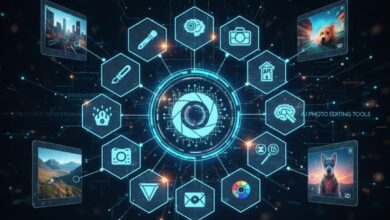What is RGX: A Comprehensive Guide

In the ever-evolving world of technology and digital innovation, new terminologies and concepts emerge regularly, shaping the way we interact with the digital universe. One such term that has gained prominence is “RGX.” This comprehensive guide aims to demystify RGX, delving into its origins, applications, and the impact it has on various industries.
Understanding RGX: The Basics
RGX, an abbreviation that stands for Raster Graphics Extension, is a term used in the realm of computer graphics. This technology pertains to the creation, manipulation, and storage of images as pixel-based raster graphics. Unlike vector graphics, which are composed of paths, raster graphics are made up of a grid of individual pixels, each holding a value that represents a portion of the image.
The significance of RGX lies in its ability to handle complex and detailed images, such as photographs, with a high degree of realism. This technology is especially crucial in fields that require detailed imaging and nuanced color gradations, such as digital photography, web design, video game graphics, and medical imaging.
Historical Context and Evolution
The roots of RGX can be traced back to the early days of computer graphics, emerging in the latter part of the 20th century. Initially, computer graphics were predominantly vector-based, limiting the detail and realism achievable in images. The advent of RGX marked a paradigm shift, allowing for the creation of more detailed and lifelike images.
Over the years, RGX has undergone significant evolution. Advances in computing power and graphic processing units (GPUs) have vastly increased the capabilities of RGX technology. Today’s RGX systems can handle ultra-high-resolution images and complex 3D environments with ease, a far cry from the simple, pixelated images of the early days.
RGX in Today’s Digital Landscape
In the current digital landscape, RGX plays a pivotal role across various sectors. In the realm of web design, RGX enables the creation of visually rich and interactive websites. These websites often feature detailed images, animations, and video content, all of which rely heavily on RGX technology.
The gaming industry, too, owes much of its visual splendor to RGX. Modern video games, known for their stunning graphics and immersive environments, utilize RGX to create detailed textures, realistic lighting, and complex 3D models. This advancement in graphics has not only enhanced the gaming experience but also expanded the industry’s reach and appeal.
Additionally, RGX has significant applications in the field of medical imaging. Techniques like MRI and CT scans leverage RGX technology to produce detailed images of the human body, aiding in diagnosis and treatment planning. The ability of RGX to render high-resolution, accurate images is crucial in this sensitive and precision-driven field.
Challenges and Future Prospects
Despite its numerous applications and benefits, RGX technology faces certain challenges. One major concern is the demand for high computational power, especially for processing ultra-high-resolution images and complex 3D models. This requirement can lead to increased costs and the need for specialized hardware, making RGX technology less accessible in resource-limited settings.
Furthermore, as technology continues to advance, the need for more efficient and powerful RGX systems becomes evident. Research and development in this field are focused on optimizing image processing algorithms, enhancing GPU capabilities, and exploring new methods of image rendering, such as ray tracing.
The future of RGX looks promising, with potential applications extending into virtual reality (VR), augmented reality (AR), and artificial intelligence (AI). In VR and AR, RGX can create immersive and interactive environments, offering new ways to experience digital content. In AI, RGX can play a role in visual recognition systems and image-based machine learning algorithms.
Integration of RGX in Mobile Technology
The integration of RGX in mobile technology has been a game-changer. With the advent of high-resolution displays on smartphones and tablets, RGX has become crucial in rendering crisp and detailed images. Mobile app developers leverage RGX to enhance user experience, offering visually stunning interfaces and graphics-intensive applications. This advancement has not only improved the aesthetic appeal of mobile apps but has also facilitated more immersive experiences in mobile gaming and augmented reality applications.
RGX’s Role in Digital Marketing and Advertising
Digital marketing and advertising have been transformed by the capabilities of RGX. Advertisements, whether online or in digital billboards, now feature high-definition images and videos that capture consumer attention more effectively. RGX enables marketers to create visually appealing and memorable content, which is vital in a world where digital imagery greatly influences consumer behavior. This technology’s ability to handle complex visuals has also enabled more innovative and interactive ad formats, further revolutionizing the advertising sector.
Environmental Impact and Sustainability Concerns
The environmental impact and sustainability concerns surrounding RGX technology are increasingly gaining attention. High-end RGX systems require significant energy to operate, contributing to larger carbon footprints. The production and disposal of RGX hardware also pose environmental challenges, given the use of rare materials and electronic waste concerns. Addressing these issues requires a concerted effort towards more energy-efficient RGX solutions and sustainable practices in manufacturing and disposal.
RGX in Education and Training
RGX has found substantial application in the field of education and training. Educational software and e-learning platforms now use detailed graphics and interactive elements to enhance learning experiences. RGX technology enables the creation of realistic simulations and virtual labs, allowing students to engage in hands-on learning in a virtual environment. This approach not only makes learning more engaging but also accessible, as it overcomes the limitations of traditional classroom settings.
Accessibility and RGX
While RGX brings numerous benefits, there’s a growing discourse around its accessibility. The high cost of advanced RGX systems can be a barrier for small businesses, educational institutions, and users in developing regions. There’s a pressing need for more affordable RGX solutions that do not compromise on quality. Efforts are being made to democratize access to high-quality digital graphics, ensuring that a wider audience can benefit from these technological advancements.
RGX and Cybersecurity
The intersection of RGX and cybersecurity is an area of increasing importance. As RGX technology is used to handle sensitive data, especially in fields like medical imaging and personal identification, ensuring the security of this data becomes paramount. Potential risks include unauthorized access and manipulation of graphic data. The cybersecurity industry is responding by developing more robust security protocols and encryption techniques to protect data handled by RGX systems.
Conclusion
RGX technology, with its expansive range of applications from mobile technology to digital marketing, education, and beyond, plays a critical role in shaping our digital experiences. As we navigate the challenges related to environmental impact, accessibility, and cybersecurity, the continuous evolution of RGX promises to bring more innovative solutions and opportunities. Its integration into various sectors underscores not only its versatility but also its potential to drive significant advancements in how we interact with and perceive the digital world. As we move forward, RGX will undoubtedly continue to be a pivotal element in the technological landscape, shaping the future of digital imagery and graphics.



